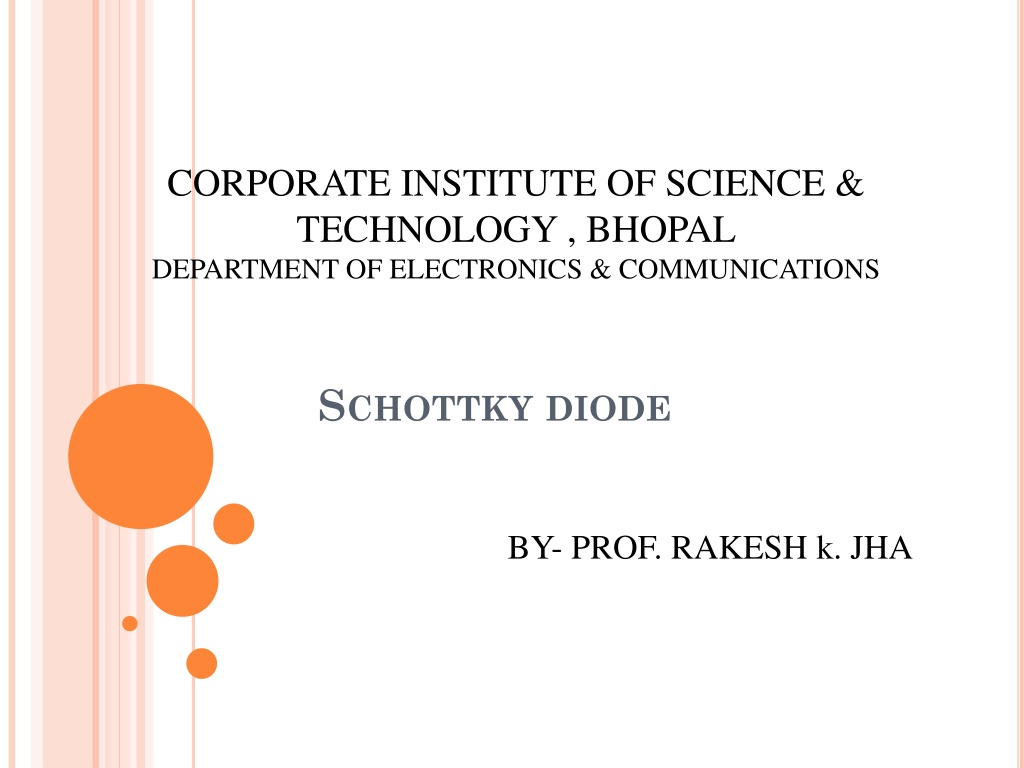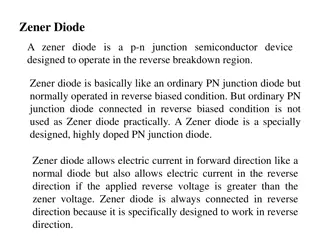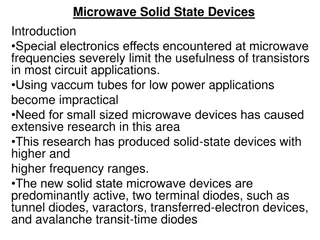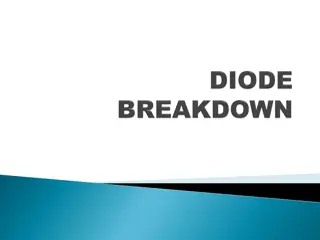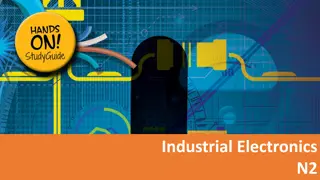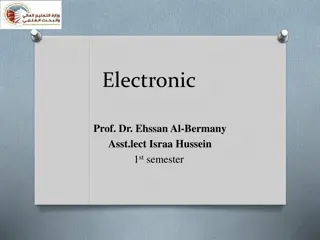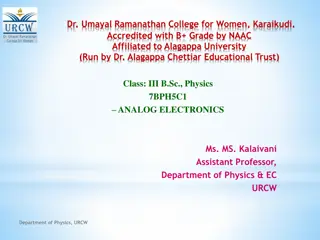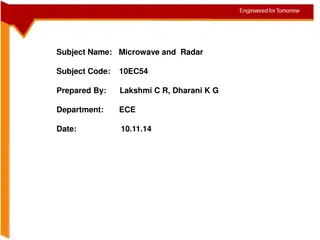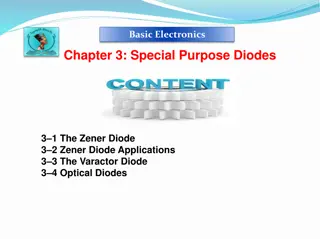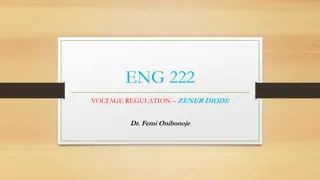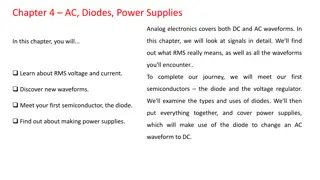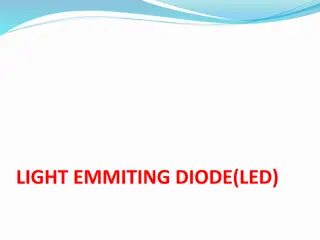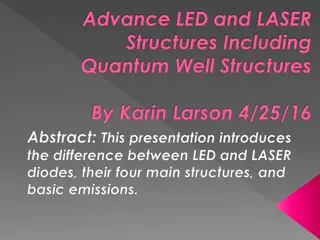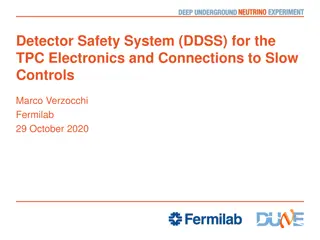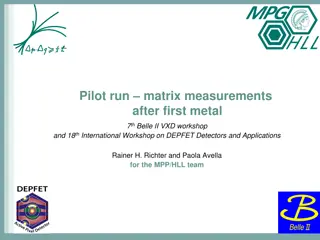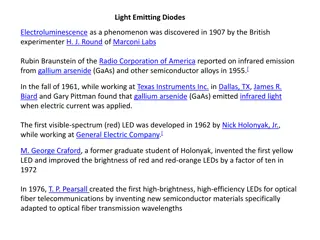Understanding Schottky Diodes in Electronics
The Schottky diode is a semiconductor device known for its low forward voltage drop and fast switching action. Unlike ordinary diodes, it forms a metal-semiconductor junction, resulting in higher efficiency and faster switching speeds. This article explores the construction, working principle, and key characteristics of Schottky diodes, emphasizing their benefits in electronic circuits.
Download Presentation

Please find below an Image/Link to download the presentation.
The content on the website is provided AS IS for your information and personal use only. It may not be sold, licensed, or shared on other websites without obtaining consent from the author. Download presentation by click this link. If you encounter any issues during the download, it is possible that the publisher has removed the file from their server.
E N D
Presentation Transcript
CORPORATE INSTITUTE OF SCIENCE & TECHNOLOGY , BHOPAL DEPARTMENT OF ELECTRONICS & COMMUNICATIONS SCHOTTKY DIODE BY- PROF. RAKESH k. JHA
SCHOTTKY BARRIER DIODE The Schottky diode (named after German physicist Walter H. Schottky; also known as hot carrier diode) is a semiconductor diode with a low forward voltage drop and a very fast switching action. When current flows through a diode there is a small voltage drop across the diode terminals. A normal silicon diode has a voltage drop between 0.6 1.7 volts, while a Schottky diode voltage drop is between approximately 0.15 0.45 volts. This lower voltage drop can provide higher switching speed and better system efficiency.
CONSTRUCTION A metal semiconductor junction is formed between a metal and a semiconductor, creating a Schottky barrier (instead of a semiconductor semiconductor junction as in conventional diodes). Typical metals used are molybdenum, platinum, chromium or tungsten; and the semiconductor would typically be N-type silicon. The metal side acts as the anode and N-type semiconductor acts as the cathode of the diode. This Schottky barrier results in both very fast switching and low forward voltage drop. Metal N-type material
WORKING The electrons of N-side having low energy level than that of metal . So electrons cant cross the junction barrier called schottky barrier. In Forward bias the electrons in N side gain enough energy to cross the junction barrier and plunge into the metal with very large energy .They are called it hot carriers and diode is called hot carrier diode. 5
REVERSERECOVERYTIME The most important difference between the p-n and Schottky diode is reverse recovery time, when the diode switches from conducting to non-conducting state. Where in a p-n diode the reverse recovery time can be in the order of hundreds of nanoseconds and less than 100 ns for fast diodes, Schottky diodes do not have a recovery time, as there is nothing to recover from (i.e. no charge carrier depletion region at the junction).
SOMEIMPORTANTPOINTSABOUTSCHOTTKYDIODE Schottky diode is metal to semiconductor junction. Schottky diode is a majority carrier device unlike to normal pn junction diode It does not have charge storage region there for very fast speed Semiconductor used is usually N-type. Semiconductor region is lightly doped. It is operated at high frequencies from few MHZ to GHZ range.
LIMITATIONS The most evident limitations of Schottky diodes are the relatively low reverse voltage ratings for silicon-metal Schottky diodes, typically 50 V and below, and a relatively high reverse leakage current. Some higher-voltage designs are available; 200V is considered a high reverse voltage. Reverse leakage current, because it increases with temperature, leads to a thermal instability issue. This often limits the useful reverse voltage to well below the actual rating. While higher reverse voltages are achievable, they would be accompanied by higher forward voltage drops, comparable to other types; such a Schottky diode would have no advantage
APPLICATIONS Voltage clamping and clipping circuits Reverse current and discharge protection Rectify high frequencies signal. Low power TTL logic. As a switching devices. 10
Thank you 11
